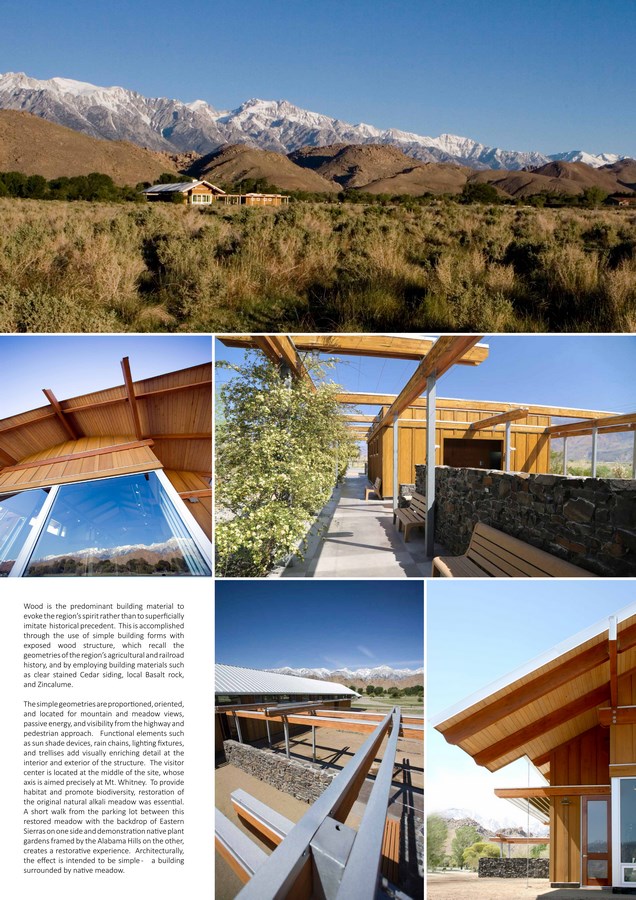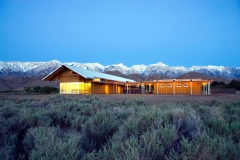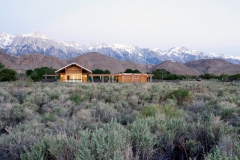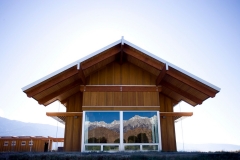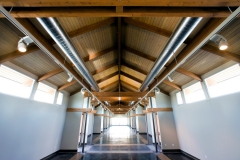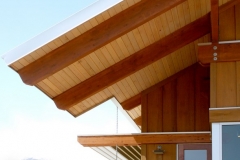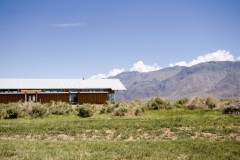Located at the foot of Mt. Whitney, the 6,500 S.F. Visitor Center project on twelve acres is located in a spectacular valley bounded by the Inyo Mountains to the east and the Eastern Sierra Nevada to the west. The Inter-Agency client group consisted of local, state and federal agencies, with the USDA Forest Service acting as lead agency. The program for this gateway to California’s high desert includes a gallery for the display of exhibits depicting the history, flora and fauna of the region, a bookstore, restroom building, staff offices, permitting services for hikers and tourists, regional native plant gardens, picnic areas, and Mount Whitney outlook view points.
Urban Design & Architecture Design Awards 2018
First Award | Category: Cultural
Architects: Marcy Wong
Studio Name: Marcy Wong Donn Logan Architects
Team Members: Marcy Wong, Donn Logan, Kent Royle
Country: United States
Website: www.wonglogan.com
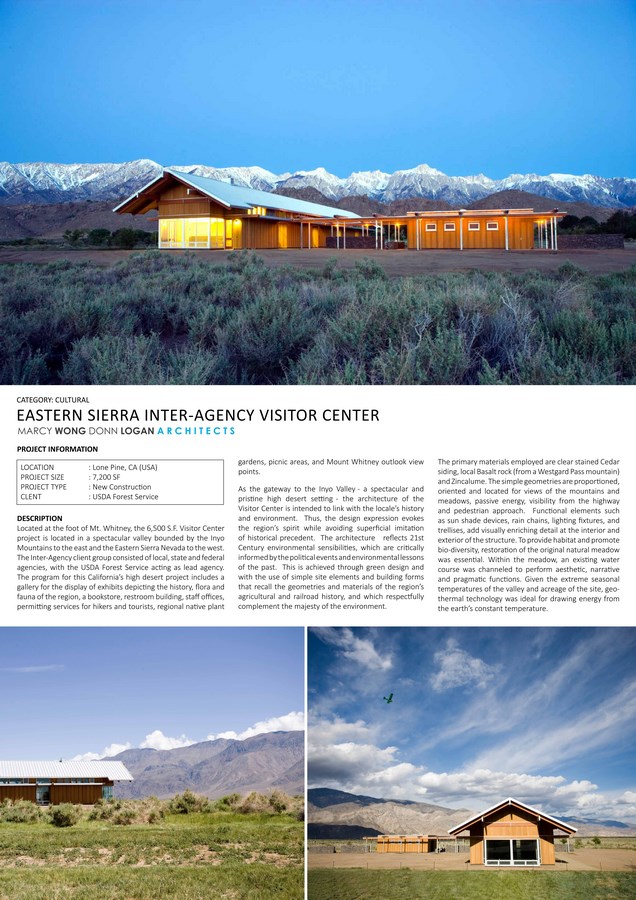
As the gateway to the Inyo Valley – a spectacular and pristine high desert setting – the architecture of the Visitor Center is intended to convey a bond to and immediacy with the locale’s history and environment. Thus, the design expression evokes the region’s spirit while avoiding superficial imitation of historical precedent. The architecture conveys forward-looking ideas as it presents 21st Century environmental sensibilities, which are critically informed by the political events and environmental lessons of the past. This is achieved through green design and with the use of simple site elements and building forms that recall the geometries and materials of the region’s agricultural and railroad history, and which respectfully complement the majesty of the environment.
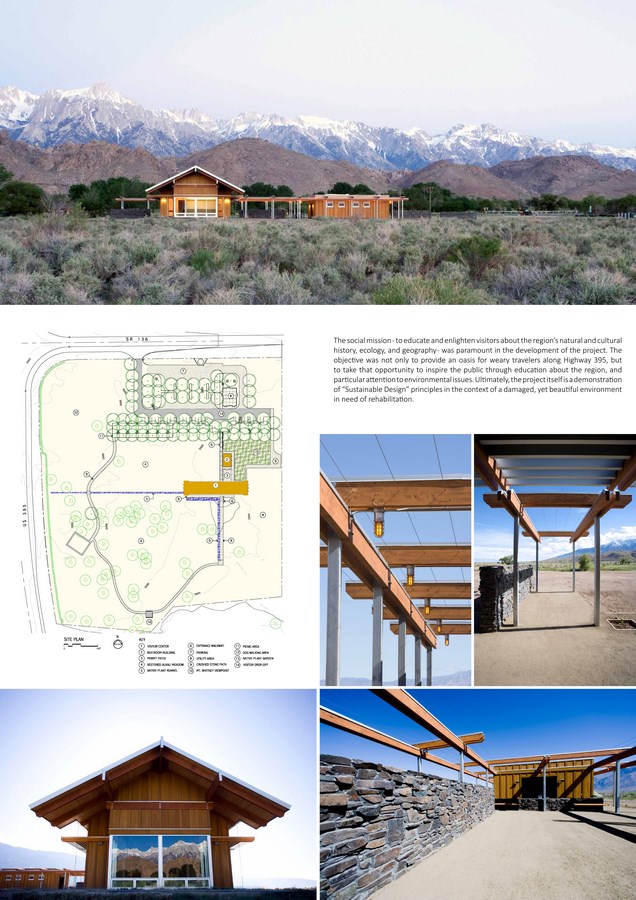
The primary materials employed were clear stained Cedar siding, local Basalt rock (from a Westgard Pass mountain) and Zincalume. The simple geometries are proportioned, oriented and located for views of the mountains and meadows, passive energy, visibility from the highway and pedestrian approach. Functional elements such as sun shade devices, rain chains, lighting fixtures, and trellises, add visually enriching detail at the interior and exterior of the structure. The visitor center, located at the middle of the site, is linear in plan with an axis aimed precisely at Mt. Whitney. To provide habitat and promote biodiversity, restoration of the original natural alkali meadow was essential. A short walk from the parking lot between this restored meadow with the backdrop of Eastern Sierras on one side and demonstration native plant gardens framed by the Alabama Hills on the other, creates a restorative experience. Architecturally, the effect is simple yet striking as the building is largely surrounded by this native meadow. Within the meadow, an existing water course is channeled to perform aesthetic, narrative and pragmatic functions. Planted with a wet meadow along its course the “runnel” tells a natural story of plant communities. It is variously lush or dry as the seasons change; lined with native plantings, it visually roots the building to the landscape, recalls the irrigation canals of the Native Americans in that region, and pragmatically, serves to collect the site water in a beautiful and organic way.
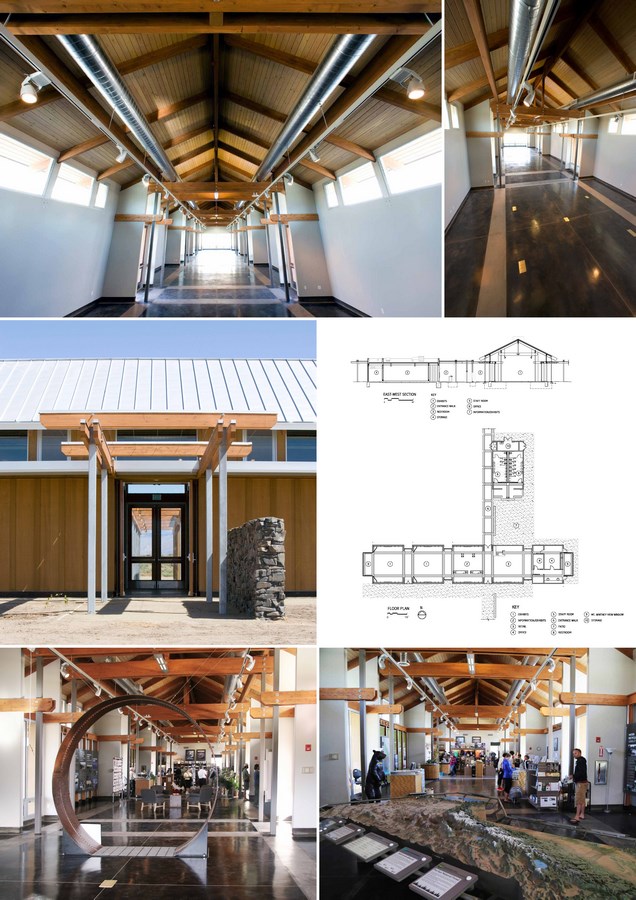
Given the extreme seasonal temperatures of the valley and acreage of the site, the team realized this project to be ideal for geo-thermal technology drawing energy from the earth’s constant temperature. The design team took advantage of the considerable sustainability in this highly efficient, non-depleting, non-polluting energy source. Energy is provided from the earth’s mass to precondition water temperature in a ground source heat pump system. Complementing the advantages of this high functioning system, the architectural design lends a fitting visual image for the climate and context of the region – which through building orientation and strategic window placement minimized summer heat gain, maximized day-lighting, while highlighting dramatic vistas of the outdoors.
